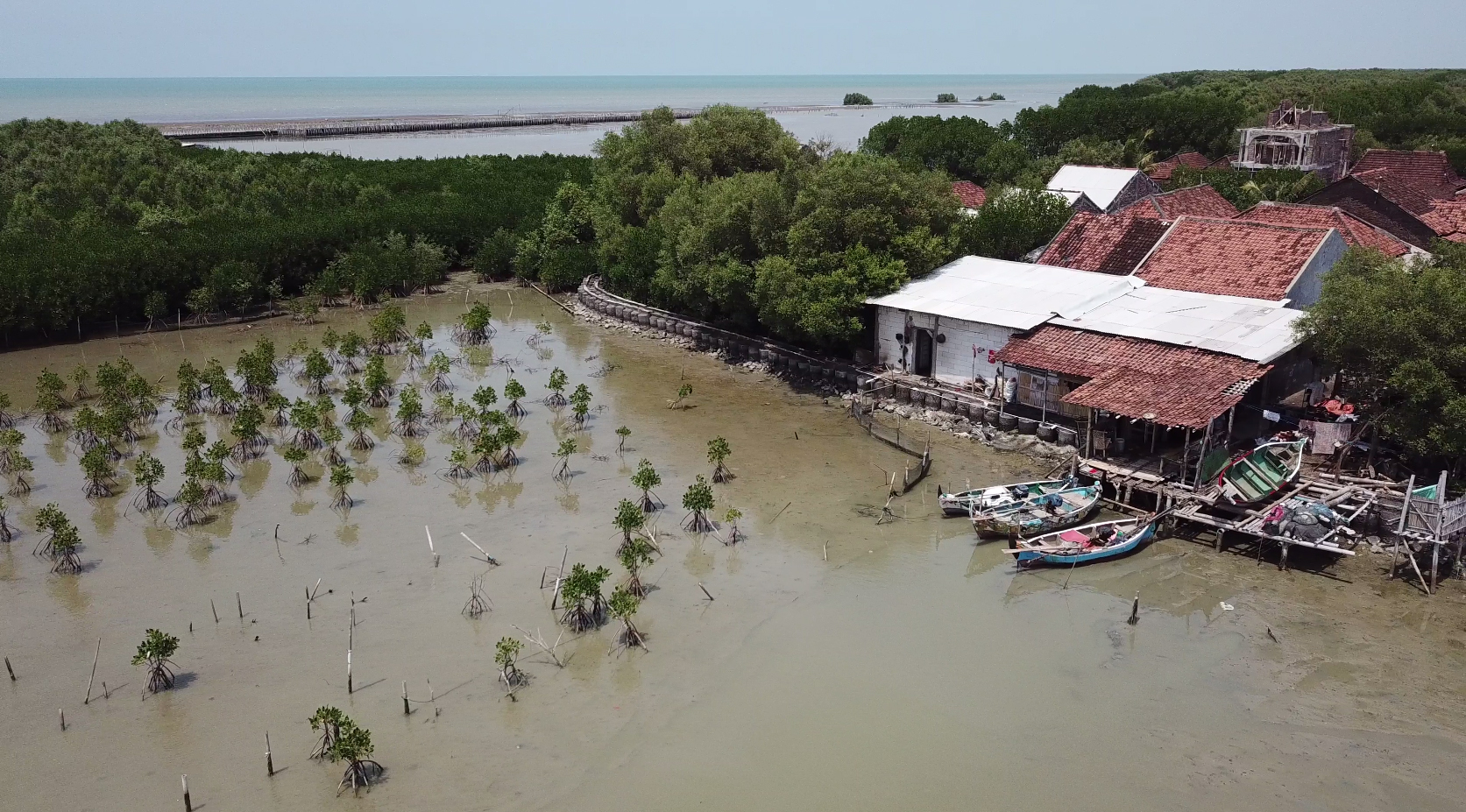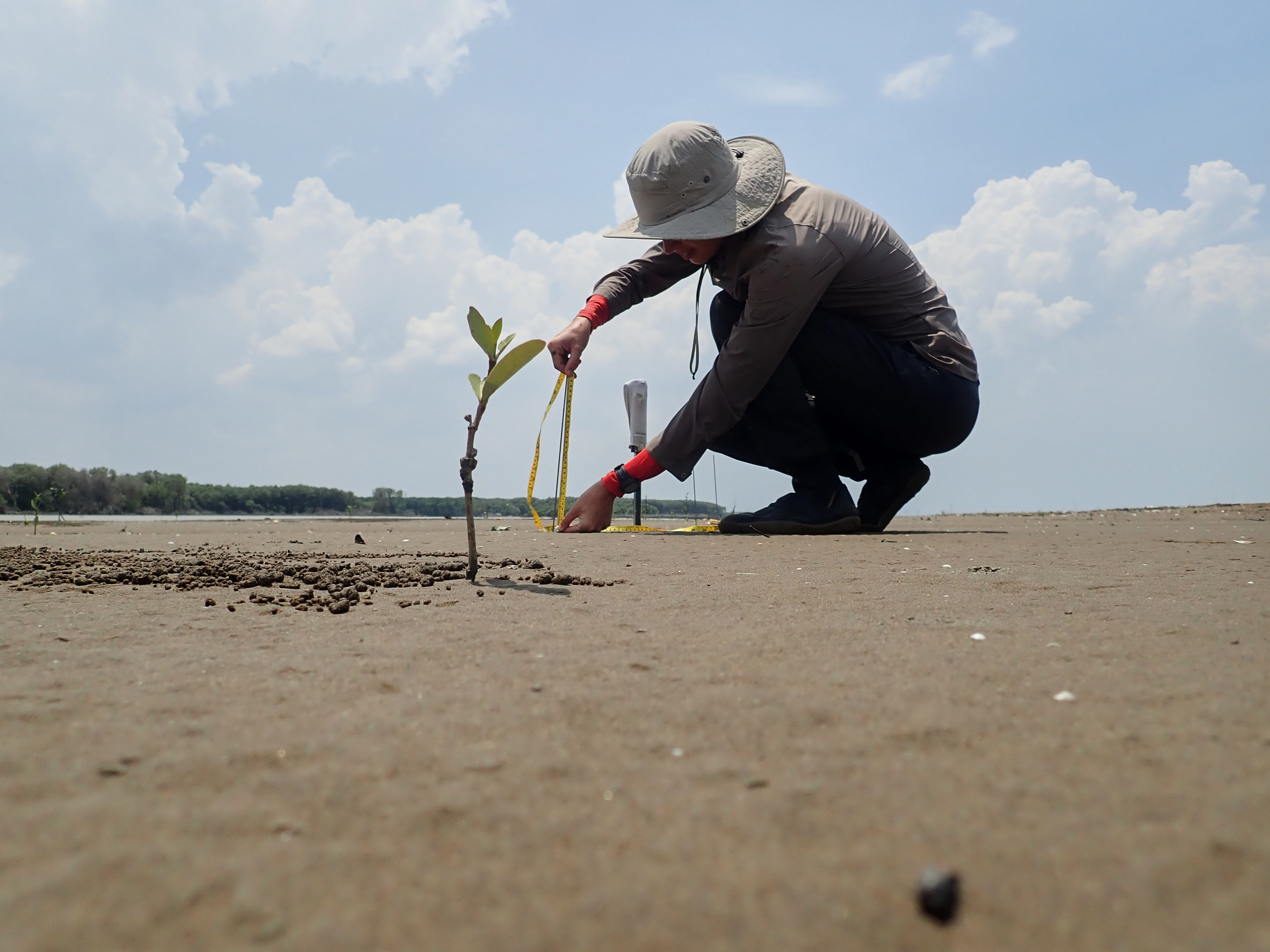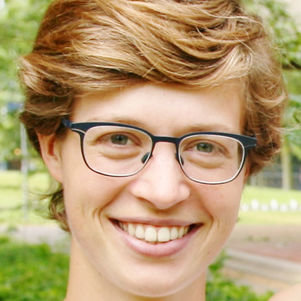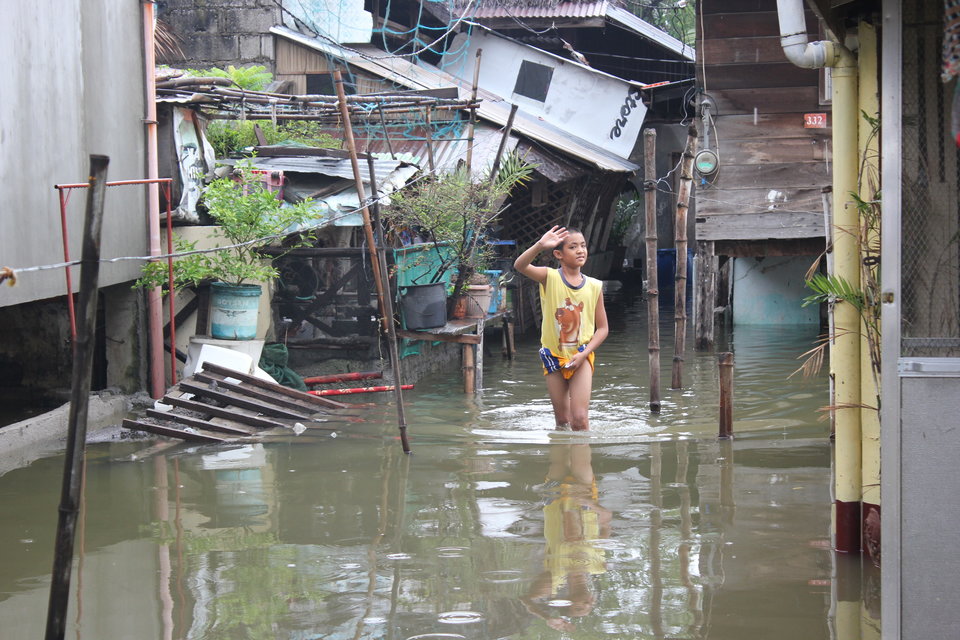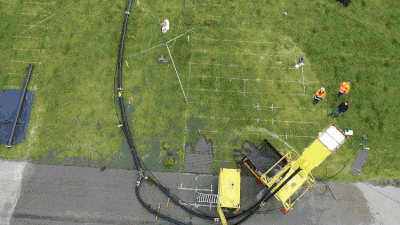Waking up early and going into the field on a small fishermen's boat, while the sun is rising behind volcano tops. That's how days started for PhD student Silke Tas during her two month fieldwork in Indonesia. The rest of her days were less idyllic: they consisted mostly of treading through the mud to get the right measurements for her research. She studies the workings of coastal sandbanks that give a chance to mangrove forests to restore, so that the forests can, in turn, prevent coast erosion.
In October 2018, Tas and two of her colleagues from the BioManCo project traded their computers and offices for the small fishermen’s village Timbulsloko on the Demak coast to delve into the workings of eroding mangrove-mud coasts. Here, mangrove forests used to protect the coast from eroding away by stabilizing it with their roots; in a natural way, no human intervention needed. Basically, just like the dunes do back here in the Netherlands. Sadly, many mangrove forests were cut down over the past years and now the coasts are eroding fast, jeopardizing the livelihoods of many fishermen.
However, there is hope. On this mud coast, peculiar sandbanks occur, which give space for the mangroves to recover so that they can protect the shores once more. Tas is trying to find out what the origin is of those sandbanks and how they move along the coast. ''If we discover how the sandbanks work, we might manipulate them to enhance mangrove restoration and slow down the coast degradation'' dreams Tas.
Fisher's help
During her fieldwork, she lodged in a fishermen's home, which elevated the will to fulfil that dream. Living closely with the fishers, she saw how coast degradation really affects their life. If the coast degradation does continue, the livelihoods of many fishermen are at stake. Hence, she says: "Fieldwork makes the research very tangible, and those people are so happy to have you because they see with their own eyes that their environment is in danger. Even though there is a huge language barrier, everyone is trying to help with your research and even doing suggestions on what is going on.''
Waiting for the storm
But before the big fieldwork adventure, Tas had to plan the research months ahead. For example, getting the right research permits, to which she laughingly adds, ''I learned so many things that had nothing to do with PhD'ing''. But even though she was as well prepared as she could be, things never go as planned in the field. ''We planned the fieldwork during the storm season because we wanted to look at the wave influence on the sand bars. However, this year, the storm season started especially late, and we missed all of them. The highest wave we measured was 40 cm's high'', Tas adds as an example of these unplanned circumstances. However, the sandbanks were still moving a lot, even without the presence of waves, and this proved to be as exciting.
Nature can turn against a researcher, but cultural differences sometimes cause trouble as well. "When we decided that a certain location was perfect to set up equipment, the local fishermen may have thought differently, because that was their best fishing spot. They would just move the equipment, making the measurements useless''. That is also how, eventually, a whole piece of equipment went missing. Funny enough, it was a GPS buoy that continued sending its location and was obviously placed in a fishing boat on its way to another village. Sitting on the back of a scooter, travelling over terrible mud roads, Tas followed its path. It took two more days to retrieve the buoy as it was carefully hidden, but the fishermen who took it felt so sorry, he did not only give Tas her buoy back but also gifted her four large fish.
Fieldwork clearly presented Tas with several hardships, yet she looks back at it with an enormous smile. It definitely plays a role that innovating and adapting on the spot is not new to Tas. When she was younger, she worked as a sailing instructor, and ''when you are on a sailing ship, and something doesn’t go according to plan, you also need to get creative and work with what is available, which is also very much applicable to fieldwork''.
Terug op kantoor
Although a lot of things did not go as planned, the fieldwork was a success. Tas was mainly interested in where the sandbanks came from, as the coast itself is made of mud, which exists of very fine particles. Then suddenly, on top of it, there are those flats of coarser material which seem to have come out of nowhere. The data she collected can give just the insight she needs to explain this phenomenon. ''Currently, I am trying to use parts of the data to model what I have seen in the field'', she tells, ''I have three hypotheses which could explain it, and I hope that the data and the model can show me the way''. Knowing the sandbanks origins also explains a big deal about their movements, and with that, how they can be used to rehabilitate the mangrove forests.
After all, Tas had to replace the sunrises in Indonesia for her office again. However, she is still as enthusiastic as ever about her research. ''I am almost finishing my PhD, and I am to find how the sandflats work before then. When all three of us are done, we are going back to Indonesia to present our results'. At that point, no more GPS buoys will be stolen, and Tas just hopes to present how her research can contribute to the first step towards coast restoration by using nature its own strength.

